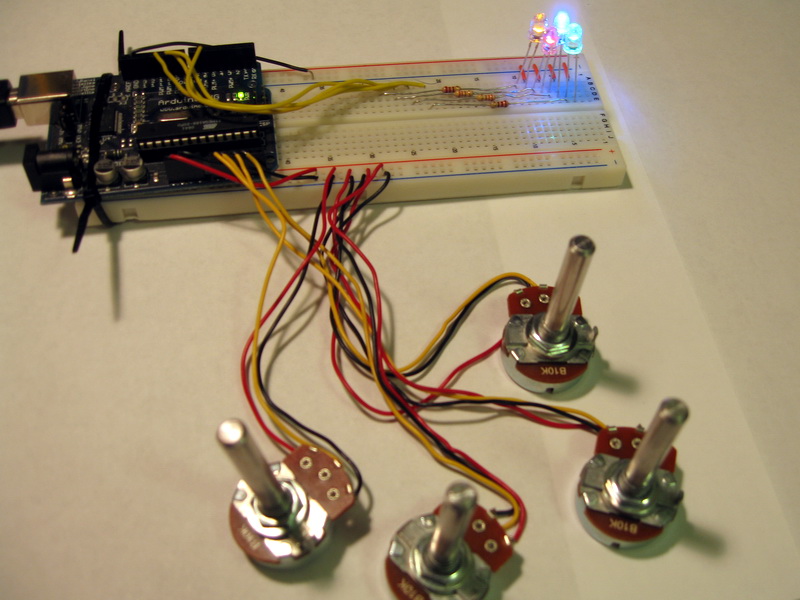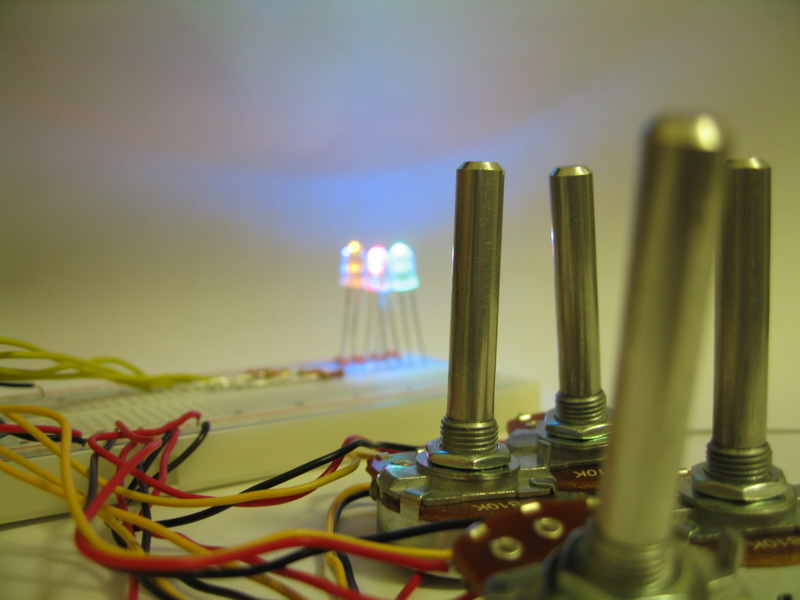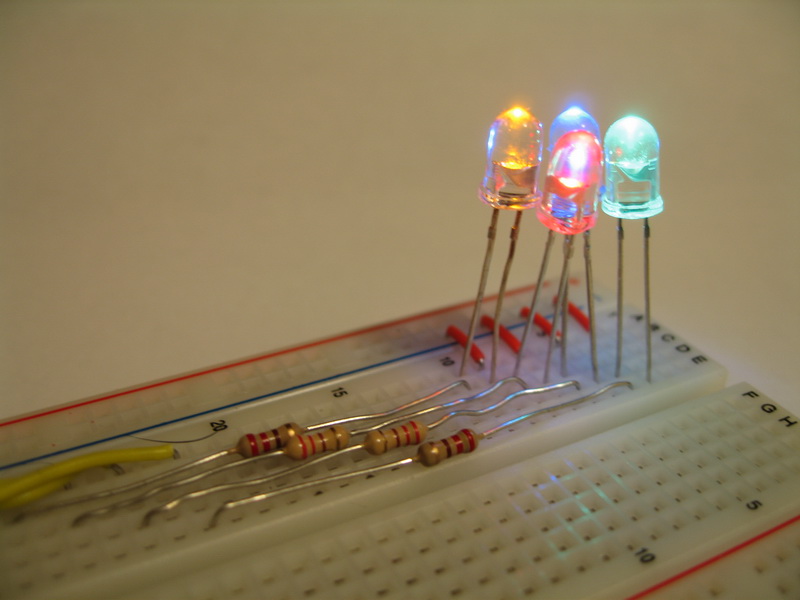Assignment: Sensing: Potentiometers
Collaborators:
Assignment: Sensing: Potentiometers
Collaborators:
Assignment: Sensing: Potentiometers
Collaborators:
Description
For this lab, I followed the directions given in class. In addition, I added an additional LED and pot I had at home. I reused my diffuser with cotton (instead of a packing peanut) from the last assignment.
More information about the code and additional parts for the assignment are described below.
Components Used
Code + Extras
For the assignment, I wired up four different colored LEDs (RGBY). Using the arduino programming language, I wrote code that associated a potentiometer for each LED.
For the "interesting" portion of the assignment, I set a threshold value midway through the pot. From 0 to 127, the LED starts from OFF (analog value 0) and increments up to fully on (analog value 255). Once the pot reaches the midway point, it begine to flash rapidly. Adjusting the pot higher will continue to slow down the rate of blinking.
Here is a text diagram of what is going on:
Analog Value: 0 -------------------------------------- 127 -------------------------------------- 255
LED: | Off -------> + intensity -------> Full || (fast blink) ---> - blink rate ---> (slow blink)|
Images




Source Code
// Analog pin settings
int aIn = 0, bIn = 1, cIn = 2, dIn = 3;
// Digital pin settings
int aOut = 6, bOut = 9, cOut = 10, dOut = 11;
// Pot Values
int aVal = 0, bVal = 0, cVal = 0, dVal = 0;
// Variables for comparing values between loops
int i = 0; // Loop counter
int wait = (1000); // Delay between most recent pot adjustment and output
int blinkDelay = 0; // Blink delay
int checkSum = 0;
int prevCheckSum = 0;
int sens = 3;
void setup()
{pinMode(aOut, OUTPUT);
pinMode(bOut, OUTPUT);
pinMode(cOut, OUTPUT);
pinMode(dOut, OUTPUT);
Serial.begin(9600); // Open serial communication for reporting
}
void loop()
{i += 1; // Count loop
aVal = analogRead(aIn) / 4; // read input pins, convert to 0-255 scale
bVal = analogRead(bIn) / 4;
cVal = analogRead(cIn) / 4;
dVal = analogRead(dIn) / 4;
doCheck(aOut, aVal);
doCheck(bOut, bVal);
doCheck(cOut, cVal);
doCheck(dOut, dVal);
if (i % wait == 0)
prevCheckSum = checkSum; // Update the values
}
// Determine whether to blink or change intensity
void doCheck(int pin, int value)
{if (value == 0)
digitalWrite(pin, LOW);
else if (value <= 127)
doIntensity(pin, value*2);
else
doBlinking(pin, value);
}
// Adjust Intensity
void doIntensity(int pin, int value)
{analogWrite(pin, value);
}
// Adjust Blink Rate
void doBlinking(int pin, int blinkDelay)
{digitalWrite(pin, HIGH);
delay(blinkDelay);
digitalWrite(pin, LOW);
delay(blinkDelay);
}